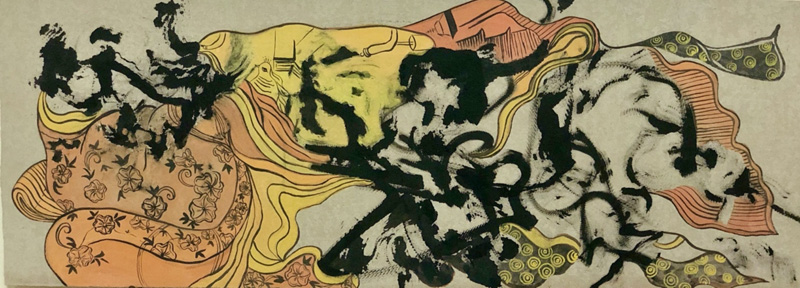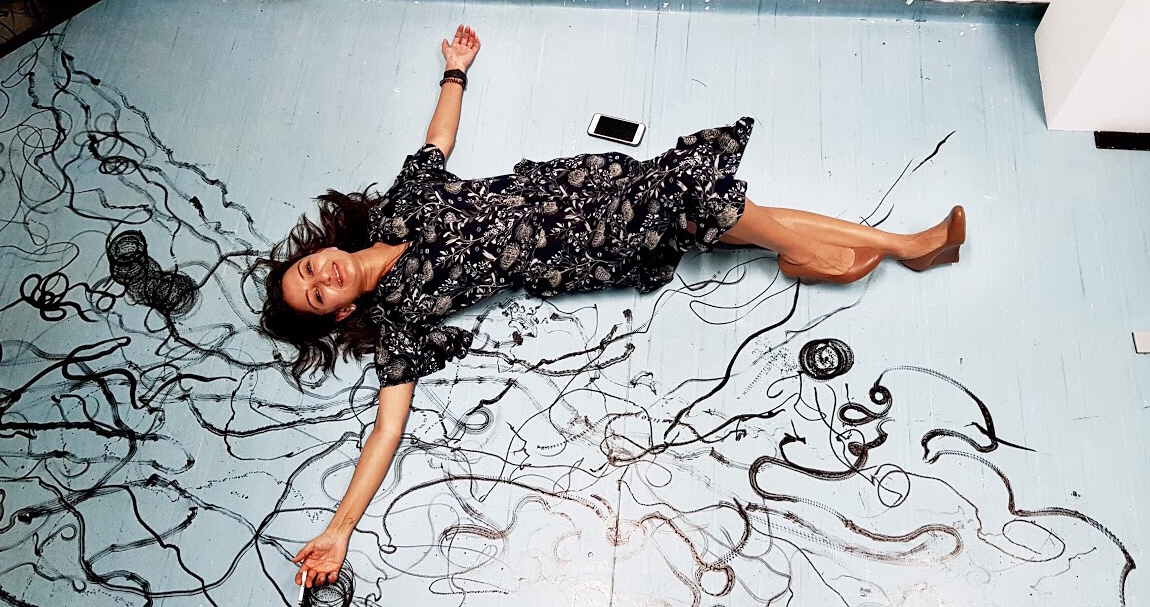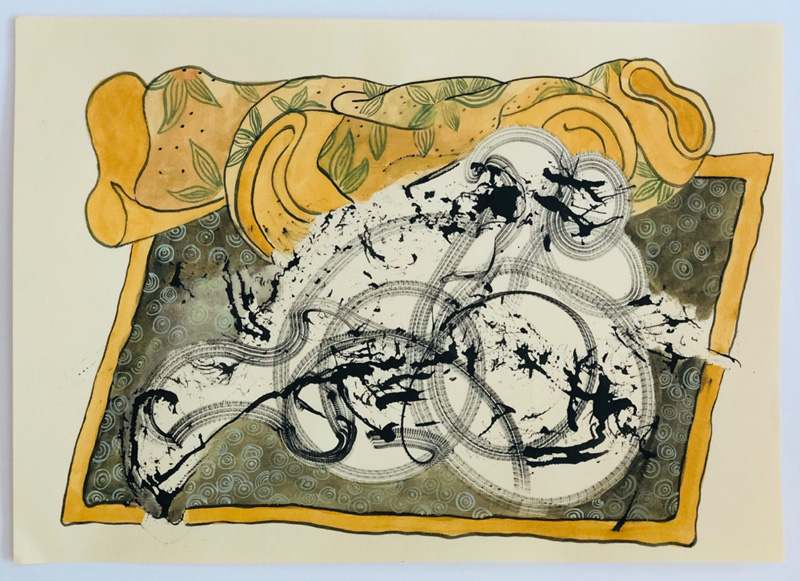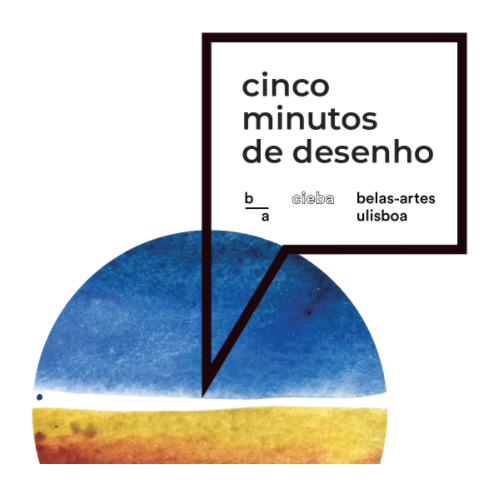Vibrator Drawings
Desire Lines and Pages from The Book of Spring
My current project is called ‘Desire Lines and Pages from the book of Spring’ which explores contemporary perceptions of female sexuality and female sexual pleasure. ‘Desires Lines’ is an architectural term, usually used to describe trampled paths that deviate from the pre-planned urban design.
Similar to urban planning, in the context of female sexuality, desire lines can be considered as solutions that ingeniously navigate the terrain of social, political and religious norms and subvert biopolitical perceptions of female sexual pleasure.

In my work, I employ a combination of artistic interventions, and performative drawing processes.
I assemblage with electro mechanical devices associated with sex, desire and pleasure, infamously known as sex toys to create drawings reminiscent to action paintings. Action paintings are known to express the subconscious. Here, the subconscious is that of the assemblage – the gadget and the artist’s body and the marks on the surface, an impression of desires arising, not from a lack but in a hope of creating new interventions.

The marks look alien and machine like. To me they are a disintegration of heterosexual binaries which also challenge the very materiality and functions of a sex toy.
Chance is an important aspect in this work. I associate this chance to partial identities of women. After all isn’t contemporary life an experiment with new found desires which we recreate, regenerate and re-define, always becoming and never arriving.
It is an odd coupling, this assemblage and its by product is a bastardised drawing. Sort of a monstrous attempt to not confer to set boundaries but over-cross and rejoice in this illegitimate fusion of human and machine.
I am A big fan of Donna Haraway and so I quote her from the cyborg manifesto, “Only by being out of place could we take intense pleasure in machines, and then with excuses that this was an organic activity after all, appropriate to females”

‘Pages from the Book of Spring’ is a version of ‘Desire Lines’ in which I fuse the abstract vibrator drawings with historical erotica. In this case the Japanese Shunga from the Edo and Meiji Period in Japan.
The Shunga mainly depicted heterosexual relationships and the lives of the emerging middle class during the 17th -19th century. The ancient collection of books, scrolls and prints are filled with middle class male fantasies that acted not only as an escape from the dreariness of everyday life but also succeeded in eroticizing and normalizing the act of sex.
In my drawings, I explore different aspects of this early eastern pornography and re-interpret its imagery through a feminine assemblage of body and machine.
I incorporate these far off cultures into my work as I find the learning interesting and stimulating. I call them ‘half learnings’ which allow me to decipher what I know from my own culture and what I acquire from a learnt experience.
Whilst retaining some of its historical aesthetics, I push the boundaries by using unconventional tools, mediums and half abstract forms. The black ink vibrator marks representing female sexual desire and the body, are created with the help of household implements. I use kitchen scrubbers, sponge cleaners and bath loofah that also signify but at the same time reject feminine ideologies of domestication and the private in a very unique way.

The physical body in this work does not have its usual form and structure. This eliminates its sexual signifiers and further challenges the notions of the male gaze. Also the female objectifier has now metamorphed into a female/assemblage female/ artist binary purging its usual signifier.
My drawings deconstruct historical ideas of eroticism, objectification and sensuality that were the foundations of the act of sex which ultimately subjugated female sexuality.
Through my art, I attempt to reclaim a space for female sexual desires by way of the assemblaging cyborg and regenerating history from an alternative standpoint.
Special thanks to L’AiR Arts Paris.
ESTE TRABALHO É FINANCIADO POR FUNDOS NACIONAIS ATRAVÉS DA FCT – FUNDAÇÃO PARA A CIÊNCIA E A TECNOLOGIA, I.P., NO ÂMBITO DO PROJETO “UIDB/04042/2020”
